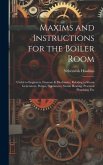"The Smith's Pocket Companion" is a valuable resource, originally published in 1893, offering a wealth of practical information and tables for smiths and steel workers. This compact guide, authored by Julius Marquardt, provides essential data on iron and steel, covering various aspects of their properties, treatment, and applications. Designed for ease of use in the workshop, the book includes tables and formulas useful for daily tasks. It remains a fascinating glimpse into late 19th-century metalworking practices, offering insights into the techniques and materials used by craftsmen of the era. "The Smith's Pocket Companion" is a worthwhile addition to the library of anyone interested in the history of technology, metallurgy, or the traditional skills of the blacksmith. This work has been selected by scholars as being culturally important, and is part of the knowledge base of civilization as we know it. This work was reproduced from the original artifact, and remains as true to the original work as possible. Therefore, you will see the original copyright references, library stamps (as most of these works have been housed in our most important libraries around the world), and other notations in the work. This work is in the public domain in the United States of America, and possibly other nations. Within the United States, you may freely copy and distribute this work, as no entity (individual or corporate) has a copyright on the body of the work. As a reproduction of a historical artifact, this work may contain missing or blurred pages, poor pictures, errant marks, etc. Scholars believe, and we concur, that this work is important enough to be preserved, reproduced, and made generally available to the public. We appreciate your support of the preservation process, and thank you for being an important part of keeping this knowledge alive and relevant.
Bitte wählen Sie Ihr Anliegen aus.
Rechnungen
Retourenschein anfordern
Bestellstatus
Storno

![The Smith's Pocket Companion, Containing Useful Information and Tables on Iron and Steel, for the use of Smiths and Steel Workers - Marquardt, Julius [From Old Catalog] The Smith's Pocket Companion, Containing Useful Information and Tables on Iron and Steel, for the use of Smiths and Steel Workers - Marquardt, Julius [From Old Catalog]](https://bilder.buecher.de/produkte/74/74358/74358279n.jpg)






